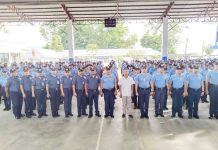
AS THE election season unfolds, the safety and integrity of the democratic process are paramount. Ensuring this requires a robust framework to prevent violence, intimidation, and other illegal activities that could undermine voter confidence. The current strategies employed to safeguard election periods are critical to evaluate, as recent incidents highlight both their strengths and areas for improvement.
The Commission on Elections (Comelec), alongside law enforcement agencies, plays a central role in maintaining peace and order during elections. Key measures such as the gun ban, heightened police visibility, and the establishment of election monitoring bodies have proven effective in many cases. However, the complexities of election-related crime necessitate constant adaptation and enhancement of these strategies.
The Comelec gun ban has been a cornerstone of election-period security. By temporarily prohibiting the carrying of firearms, it significantly reduces the potential for violence and intimidation. Recent arrests for violations demonstrate its enforceability and the commitment of law enforcement.
Deployment of additional police personnel in critical areas also serves as a deterrent to criminal activities. Checkpoints and patrols help ensure compliance with election laws. On top of this, collaboration between Comelec, local government units (LGUs), and barangay officials facilitates localized monitoring and quicker responses to incidents.
Also, task forces and monitoring centers provide platforms for reporting and addressing election-related concerns, promoting transparency and accountability.
However, despite these measures, election-related crimes persist, highlighting areas for improvement. Law enforcement agencies often face challenges in personnel, equipment, and logistics, particularly in rural areas where election violence is more likely.
The presence of unregistered firearms also remains a significant issue, complicating efforts to enforce the gun ban effectively. Worse, reports of selective implementation of election laws erode public trust and embolden violators, and covert acts of intimidation and vote-buying continue to undermine the electoral process, often eluding detection and punishment.
Without a doubt, addressing these challenges should be prioritized. But how?
Enhanced coordination among Comelec, the Philippine National Police (PNP), and the Armed Forces of the Philippines (AFP) can ensure a more unified approach to election security. Also, investing in surveillance technology, body cameras, and communication systems can boost the effectiveness of police operations. Corollary to this, identifying and focusing resources on areas with a history of election violence can preempt potential issues.
And yes, educating voters about their rights and the importance of reporting election-related crimes can create a more vigilant electorate.
Preventing crime during elections is not solely the responsibility of law enforcement agencies; it requires the active participation of all stakeholders. Voters, candidates, civil society, and media organizations must work together to safeguard the democratic process.







